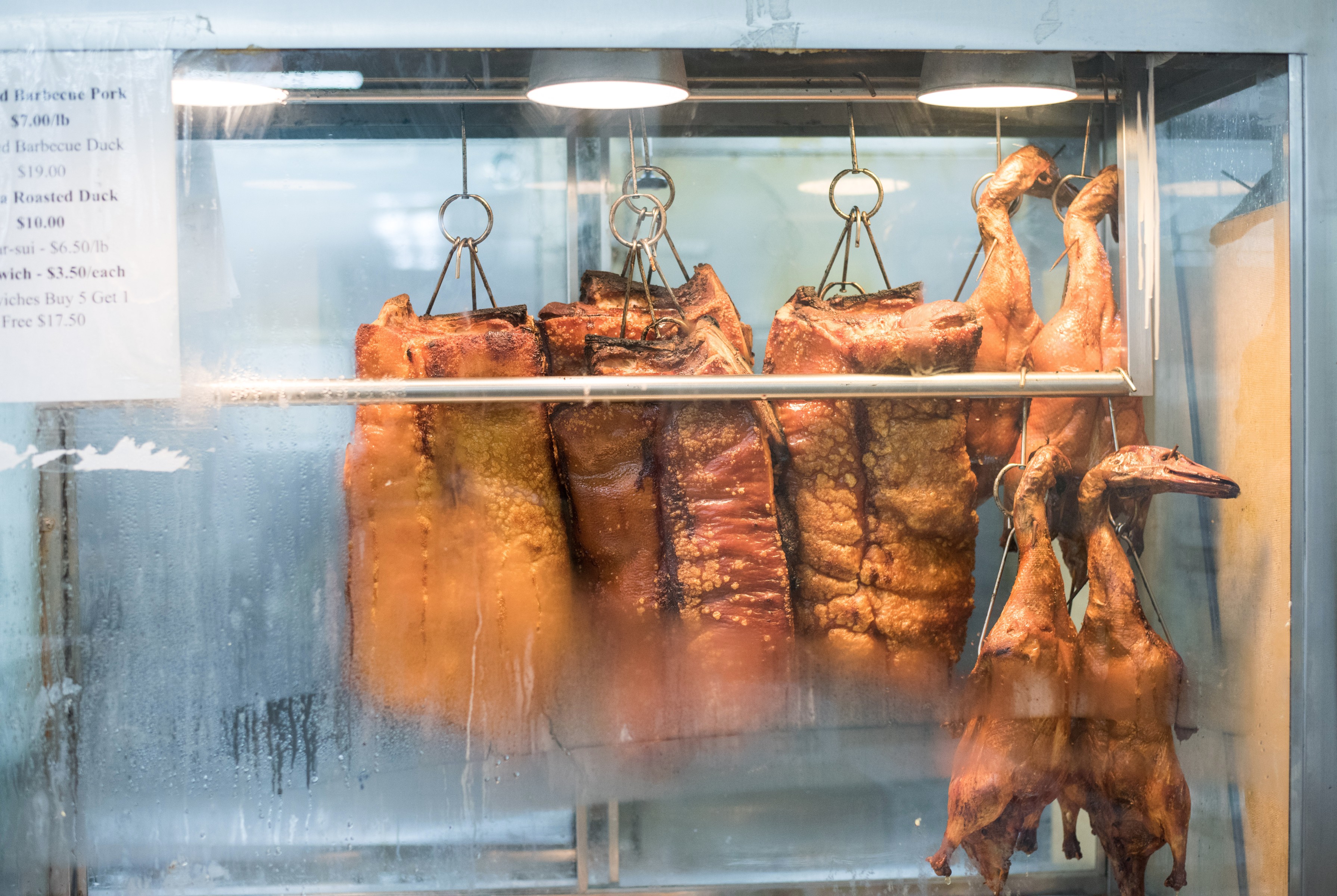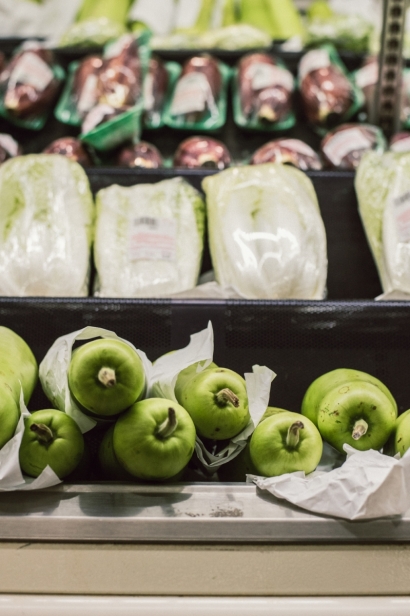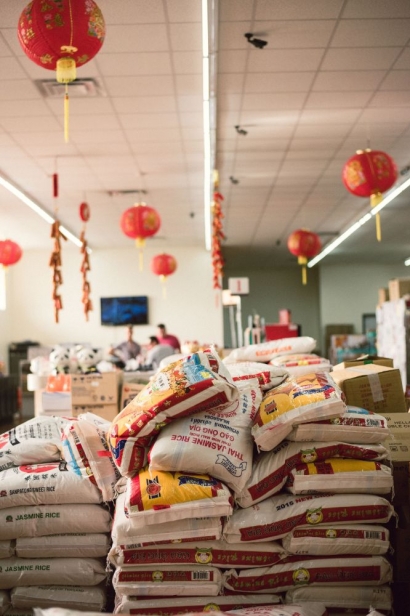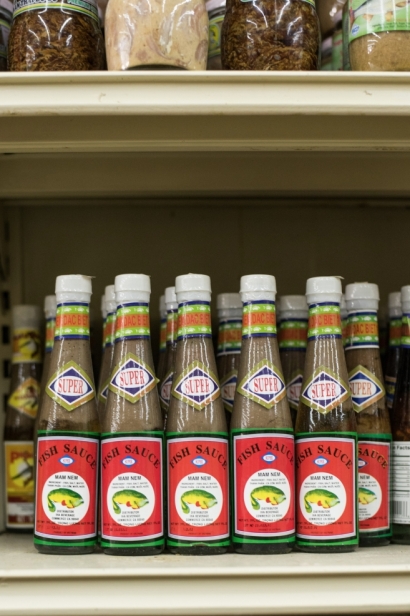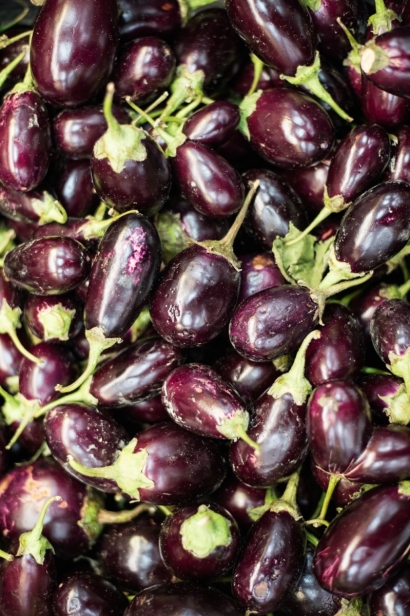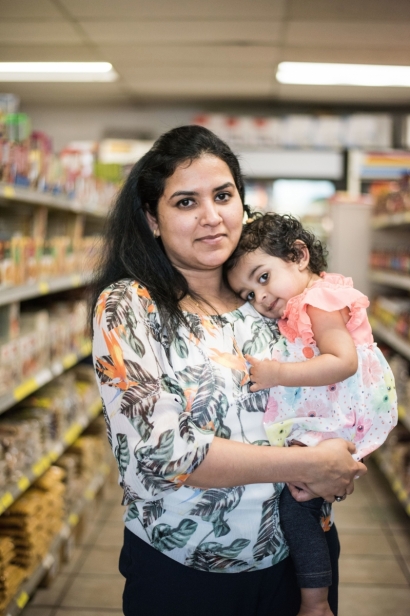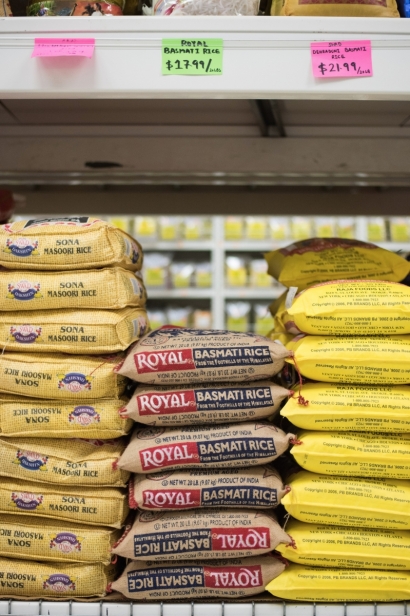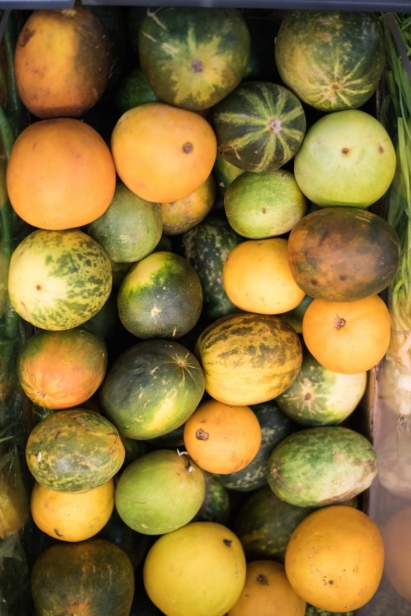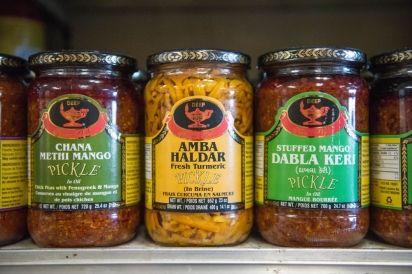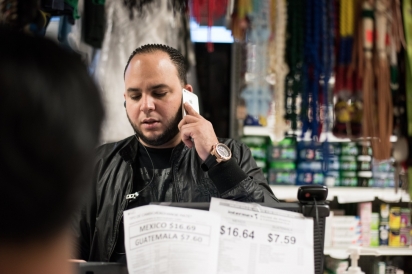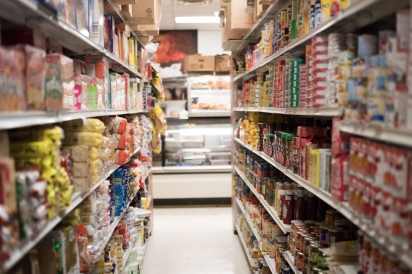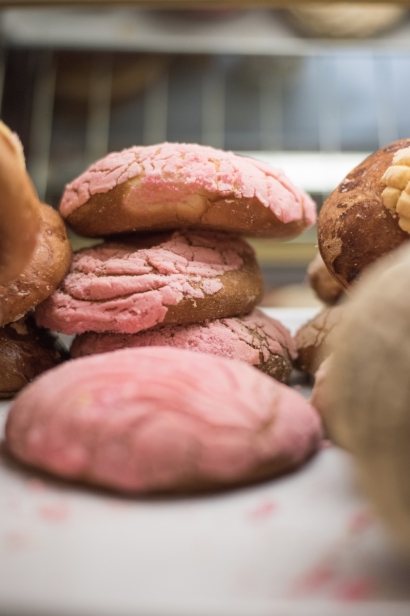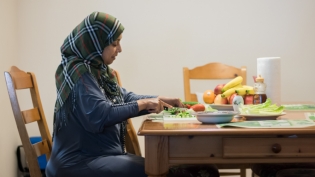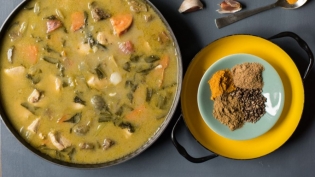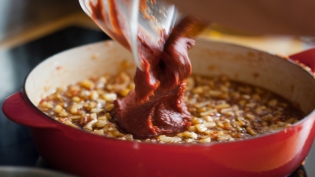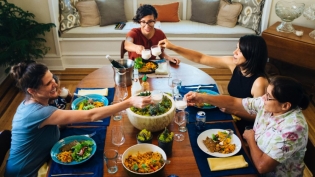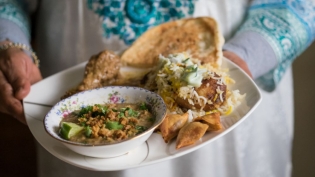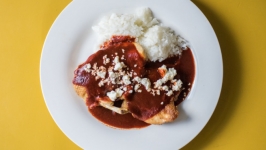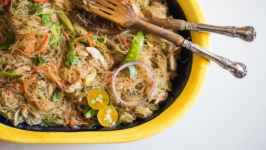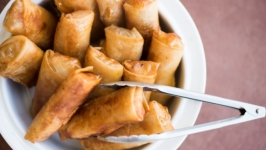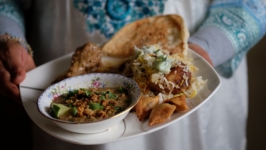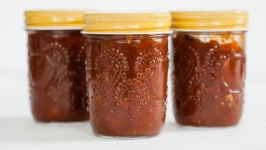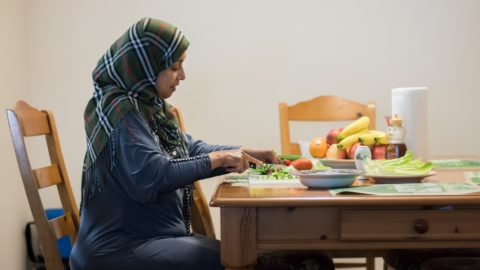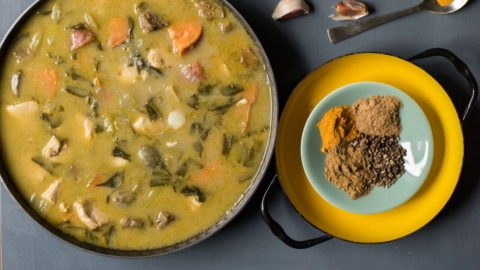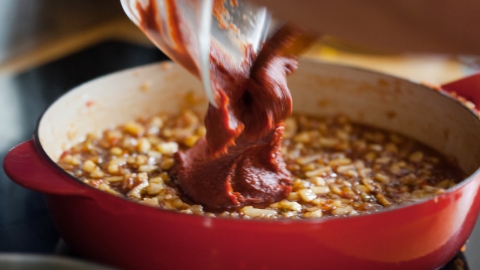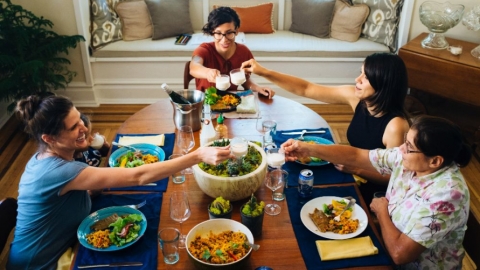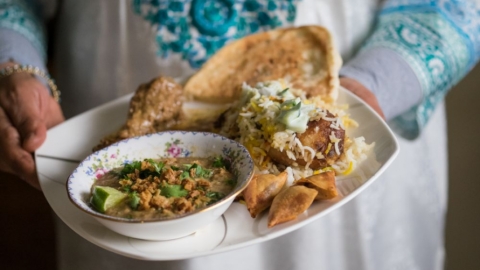Hing Jeera Peanuts, Bourbon Biscuits and Snakehead Fish
Hung Thinh casts the bait, sets the hook and reels me in. It’s an easy catch. And once again, to my chagrin, I find myself prey to the unfamiliar and unusual.
The small glass jar with its crudely illustrated, loosely descriptive label is the lure that has drawn me in. But it’s what that jar holds—a coiled miniature sea serpent the label describes as “Preserved Whole Snakehead Fish in Brine”—that catches and holds me.
It’s indeed a curious find. But not unlike other discoveries made while exploring the aisles, bins and back corners of food markets akin to Hung Thinh, both here and abroad. Far more than being a simple sideshow of culinary curiosities, Northeast Florida’s ethnic and international grocery stores offer a window to the world for those of us seeking sustenance beyond what many would consider standard, everyday “American” fare.
This product-packed Asian supermarket on Jacksonville’s sprawling and sometimes gritty West Side is the type of place that can hold anyone with a fascination for (and appreciation of) cultures beyond their own. Sharing a common language can create a bond, but food more than anything else speaks to the collective soul of any culture. Embrace its food, and you’ve embraced its people. (And, more often than not, they’ll embrace you.) Never mind language, racial and cultural differences.
As a whole, Southerners—whose regional food culture has been shaped largely by a history of immigration, both voluntary and otherwise—should perhaps be best equipped for accepting, incorporating and celebrating the food traditions of other cultures. And maybe nowhere in the South outside of New Orleans or Atlanta is this more evident than Northeast Florida, where Southern staples—fried chicken, barbecue, cathead biscuits, sawmill gravy and pecan pie—often share the same menu with tabouli, kibbi, falafel, hummus, baklava, lumpia, pinakbet and suman—Arab and Filipino specialties that reflect the influence and assimilation of two of the region’s largest and most visible ethnic populations.
More than 25,000 Filipino Americans call Northeast Florida home, many having served in or with ties to the U.S. Navy. The area’s estimated 8,000 Arab American residents, since migrating and immigrating to the area in the early 20th century, have also contributed greatly to Northeast Florida’s economy and cultural makeup, with many of the region’s business, professional and political leaders having family ties to Lebanon, Syria, Iraq and Palestine.
The area’s Hispanic and Latino population currently tops 60,000 and it’s growing. It’s our region’s largest immigrant community. In recent years, Northeast Florida has rapidly become home to increasingly large numbers of Eastern Europeans, as well as immigrants from Southeast Asia, India, Pakistan, Africa and the Caribbean.
This ethnic and cultural stew has given rise to new businesses begun primarily to serve those communities. While most of us are willing to try ethnic restaurants, cafés and food trucks, too few are willing to escape the comfort zone of our neighborhood Publix or Winn-Dixie when it comes to shopping for food.
Granted, there can be differences when comparing the typical modern supermarket in the US with many of our region’s ethnic food stores. Wide, brightly lit aisles and artful presentation of produce and packaged items create an inviting and comfortable environment that we have become accustomed to. By comparison, many ethnic grocery stores remain small, family-run businesses that are oftentimes short on consumer comforts but make up for those shortcomings in other ways.
Lower overhead means lower prices, as does the ready availability of many items rarely found in more modern grocery stores. Customer buying habits dictate selection and price. Food shoppers from immigrant communities are accustomed to prices that reflect income and lifestyle in their native countries. This is especially true with fresh produce and dry goods such as beans, rice and spices, as well as prepared foods, baked goods plus sweet and savory snacks. Some staples available in ethnic groceries can be had for as little as half the price as similar items at a typical chain supermarket.
Lower prices are, indeed, one of the benefits of shopping ethnic markets, especially for budget conscious shoppers. But perhaps the greatest benefit is experiencing the joy of discovery and of incorporating the flavors of different food cultures into our own.
MIX AND MATCH
Tortilla chips, salsas and guacamole have for years been party food favorites, sharing the same table with deviled eggs, raw veggies, ranch dressing, kettle chips and onion dip. But cruising both sides of the expansive snack aisle at Patel Brothers—a large, modern Indo/Pak supermarket on Baymeadows Road (a boulevard boasting at least a half-dozen Indian/Pakistani restaurants and multiple ethnic markets in the heart of Jacksonville’s Southside)—I’m moved to push aside the predictable Mexican-inspired fare of game day soirees to make room for savory samplings of some newly discovered snacks.
The wide, well-arranged aisles bulge with competing brands of bhel puri, dahi vada and bhujia, crisp and savory Indian street foods collectively called “chaat.” Packages of Samrat brand Sing Bhujiya hot peanuts (“Carefully selected peanuts dipped in chickpea flour and sprinkled with hot-tasty mouth-watering spices”) and Jabsons spicy Hing Jeera peanuts, touted for their “True roasted flavour and Ayurvedic digestive properties,” capture my gaze and consumptive imagination then quickly land in my cart, headed for an international rendezvous with a perfect pairing of boiled Georgia peanuts and some locally brewed IPA.
I weave my way through an amazing maze of canned goods, condiments, kitchen utensils, spiritual aids, frozen foods and microwave masala. I wander past shelves filled with bulk spices—cumin, coriander, cardamom, cinnamon, saffron, select salts, black, red and white pepper.
Pausing on the next aisle, I peruse the store’s potpourri of dried, packaged peas, beans, multi-hued lentils, rice and other grains and move on to the produce section, just past the fresh pickle and chutney bar, where shoppers can fill take-home containers with their favorite savory sides.
The store’s produce section is a rainbow ribbon of bright green, brilliant purple, red, orange and yellow—okra, eggplant, squash, scallions, peppers, pumpkins and potatoes. Papayas, mangoes and citrus, too. But also painting the space are the less familiar—desi papdi, duhdi, bitter melon, tori, guvar and snake gourd. Vedic vegetables.
I round the corner of another aisle and spot it. Bourbon. Right there at eye level. It’s the name on the foil wrapper that gets my attention. I pluck it from the shelf, study the wrapper illustration of the cream-filled chocolate “Bourbon” biscuits sealed inside, grab another and drop them both in my basket. A few of those little cookies might not make it home.
FUSION CONFUSION, OR THE PERFECT PAIR?
I like to think I can hold my own working in just about any home kitchen. But I’ll concede that when it comes to re-creating ethnic fare, I prefer to leave that to the pros. Even given the proper ingredients—all readily found at ethnic groceries and farm stalls—I might come close, but can rarely duplicate the authentic flavors of my favorite Thai, Vietnamese, Indian, Mexican or Caribbean restaurants.
What I will do instead is take those often uncommon ingredients or prepared foods from the international food aisles and pair them with or incorporate them into foods and dishes I am familiar with. Like chicken burritos topped with Amish apple butter. A curious combination, for sure. But . . . truly delicious.
My approach is akin to playing the home version of the Food Network’s “Chopped,” where competing chefs are given mystery baskets of odd and unusual ingredients, instructed to create dishes combining each of those ingredients with ingredients of their choosing, then they are eliminated or move on to the next round based on the success or failure of the dish and decision of the judges.
Exploring any of Northeast Florida’s ethnic or international groceries is much the same as opening that mystery basket. You never know what you’ll find, but will always discover something new. And, with each new discovery comes a new appreciation for, better understanding of and interest in exploring a world of flavors, cultures and ideas.


